Exploring Meat Loaf Hits; An Album Review
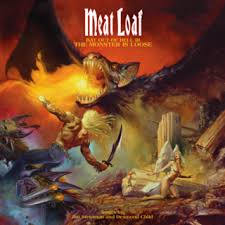
Exploring Meat Loaf Hits; An Album Review
Meat Loaf hits defined theatrical rock with dramatic vocals, powerful ballads, and unforgettable performances. His most successful records remain essential listening for fans of epic rock storytelling and emotional impact.
About Meat Loaf
What was Meat Loaf's real name?
Born Marvin Lee Aday in Dallas, Texas, he later legally changed his name to Michael Lee Aday. His stage name, Meat Loaf, originated from a childhood nickname and stuck with him throughout his professional life.
When did Meat Loaf die?
Meat Loaf passed away on January 20, 2022. His death marked the end of a career that spanned over five decades and influenced rock, pop, and musical theatre.
How old was Meat Loaf when he died?
He died at the age of 74. Despite health issues in his later years, he remained active in music and acting until shortly before his death.
What was Meat Loaf’s most famous song?
While "Paradise by the Dashboard Light" remains iconic, "I'd Do Anything for Love (But I Won’t Do That)" became his biggest chart success. Both are defining Meat Loaf hits that captured his dramatic style and vocal power.
Who wrote the songs for Meat Loaf?
Jim Steinman wrote the majority of his biggest hits, especially the Bat Out of Hell trilogy. Their collaboration created some of the most memorable rock ballads of the late 20th century.
How many albums did Meat Loaf release?
Meat Loaf released 11 studio albums. These range from the global breakthrough Bat Out of Hell in 1977 to Braver Than We Are in 2016, with several live and compilation releases in between.
What movies did Meat Loaf appear in?
Meat Loaf acted in many films, including The Rocky Horror Picture Show, Fight Club, Wayne’s World, and Spice World. His performances added another layer to his cultural presence.
What is the story behind the “Bat Out of Hell” album?
This album began as a rock opera co-written with Jim Steinman. It blended Wagnerian drama with 1950s-style rock and took years to get released. Despite initial industry resistance, it became one of the best-selling albums of all time.
Was Meat Loaf a good live performer?
Absolutely. His live shows were legendary for their theatrical flair, emotional range, and vocal intensity. He brought the same energy to concerts that made his albums so impactful.
Did Meat Loaf have any children?
Yes, he adopted Pearl Aday, the daughter of his first wife, Leslie. Pearl followed in his musical footsteps and became a rock singer in her own right.
What was Meat Loaf’s net worth?
Estimates vary, but his net worth ranged between $20 million and $40 million. Album sales, touring, and acting all contributed to his earnings, though financial struggles hit him during career lulls.
Where was Meat Loaf from?
He was born and raised in Dallas, Texas. Despite becoming an international star, his Southern roots remained part of his identity.
What was Meat Loaf’s vocal range?
Known for a wide tenor vocal range, Meat Loaf could deliver soft, emotional lines and belt out huge crescendos. His vocal power played a major role in the success of many Meat Loaf hits.
The Albums
Bat Out of Hell (1977)
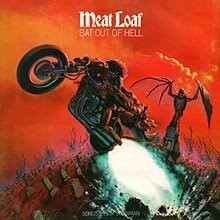
Bat Out of Hell launched Meat Loaf into global stardom. Released in 1977, this debut album became one of the best-selling records in rock history. It delivered unforgettable Meat Loaf hits that blended theatrical storytelling, over-the-top vocals, and bold instrumentation. Jim Steinman, who wrote all the songs, shaped the album’s dramatic vision. Todd Rundgren produced it, adding layered arrangements that matched Meat Loaf’s vocal power.
At the time, critics were divided. Some praised its ambition, while others dismissed it as too excessive. However, public response told a different story. Sales soared steadily, especially in the UK and Australia. Over time, critical appreciation caught up, with the album now considered a classic rock milestone.
Although rooted in 1970s rock, the sound pulled from Broadway, pop, and early rock ’n’ roll. This fusion made Bat Out of Hell stand out during a punk-dominated era. Importantly, its concept-driven structure added emotional weight and dramatic tension.
As years passed, Bat Out of Hell gained a devoted fanbase. It has sold over 40 million copies worldwide. Meat Loaf’s passionate performances and Steinman’s lyrical narratives gave it lasting impact. The album produced several enduring Meat Loaf hits, making it a vital entry point for new listeners.
The album’s themes include adolescent longing, rebellion, romance, and regret. Each track contributes to a larger narrative arc that resonated across generations. Notably, the songs often exceed traditional radio length but still achieved major chart success.
This album redefined what rock albums could accomplish both musically and theatrically. Because of its scale and success, Bat Out of Hell continues to influence rock performers and songwriters. For anyone exploring Meat Loaf hits, this album remains essential listening and a cornerstone of his legacy.
Bat Out of Hell II: Back into Hell (1993)
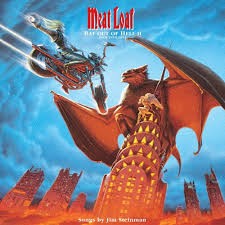
Released in 1993, Bat Out of Hell II: Back into Hell reignited global interest in Meat Loaf hits. After years of commercial struggles, this sequel reunited Meat Loaf with songwriter Jim Steinman. The result was a dramatic return to the grand, operatic rock style that first defined his success.
The album’s lead single, “I’d Do Anything for Love (But I Won’t Do That),” topped charts worldwide. It became one of the most recognized Meat Loaf hits, earning a Grammy and extensive airplay. Importantly, the track’s theatrical arrangement and emotional intensity captured what fans loved about the original Bat Out of Hell.
Musically, the album echoed the first record’s sweeping scope. Long, complex compositions mixed with soaring vocals and elaborate storytelling. While critics were divided—some praised its ambition, others found it excessive—the album’s impact was undeniable. Commercially, it sold over 14 million copies, confirming Meat Loaf’s resurgence.
The themes tackled romance, heartbreak, desperation, and fantasy. Steinman’s influence was clear throughout, shaping the album’s lyrical depth and melodic structure. Compared to the albums released in the 1980s, this one marked a powerful creative revival.
Collaborators included original Bat Out of Hell musicians like Todd Rundgren, adding continuity. The production, led by Steinman, reinforced the album’s epic tone. Its success revived interest in earlier Meat Loaf hits and introduced his music to a younger audience.
Over time, Bat Out of Hell II: Back into Hell has been recognized as one of Meat Loaf’s best albums. It bridged generations, proving that his dramatic rock style still resonated. For anyone exploring the most iconic Meat Loaf hits, this album remains an essential listen.
Dead Ringer (1981)
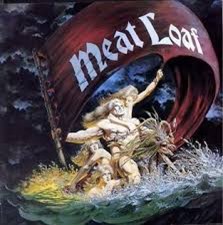
Released in 1981, Dead Ringer followed the massive success of Bat Out of Hell and featured more iconic Meat Loaf hits. Although expectations were high, the album had a different feel. Jim Steinman returned as songwriter, but Meat Loaf’s vocal issues during recording delayed production. Despite the challenges, it still delivered solid performances and commercial success.
Musically, the album continued the theatrical rock style fans expected. However, it leaned more toward traditional hard rock in places. The dramatic ballads remained, but the tone felt more grounded than its predecessor. Key collaborators included Cher, who duetted with Meat Loaf on one of the standout tracks. This added further appeal for mainstream rock audiences.
Commercially, Dead Ringer achieved platinum status in the UK. In the US, it performed modestly compared to its predecessor but still found a strong fanbase. Critical reception was mixed, with praise for standout tracks but criticism of uneven pacing. Nonetheless, many fans appreciate the album’s emotional range and raw energy.
The album’s themes include perseverance, heartbreak, and self-doubt. Although it lacked the unified narrative of Bat Out of Hell, it still reflected Steinman’s flair for emotional storytelling. Importantly, Dead Ringer kept Meat Loaf in the spotlight during a turbulent time in his career.
Over the years, Dead Ringer has earned renewed appreciation. Fans continue to explore it alongside other major Meat Loaf hits. The blend of theatrical flourishes and straight-ahead rock marked an evolution in style. Though not as globally dominant, it remains a meaningful chapter in the Meat Loaf catalogue.
For those exploring Meat Loaf hits beyond the most obvious choices, Dead Ringer stands out as a bold and heartfelt follow-up. It cemented Meat Loaf’s staying power and showed he could still deliver powerful vocals under pressure.
Welcome to the Neighborhood (1995)
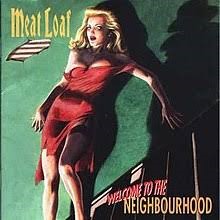
Released in 1995, Welcome to the Neighbourhood followed the massive success of Bat Out of Hell II and aimed to sustain Meat Loaf's renewed momentum. While not as grand in scope, the album still delivered several notable Meat Loaf hits and maintained the dramatic flair fans expected.
The record featured a mix of ballads and mid-tempo rock tracks, balancing emotional depth with polished production. Notably, it included collaborations with songwriters Diane Warren and Sammy Hagar rather than Jim Steinman. That shift introduced a more contemporary adult rock sound, tailored for mid-’90s radio audiences.
Commercially, the album performed well in the UK, reaching number three on the charts and going platinum. Singles like “I’d Lie for You (And That’s the Truth)” and “Not a Dry Eye in the House” received considerable radio play. These tracks further expanded the catalogue of recognizable Meat Loaf hits.
Lyrically, the album explored themes of emotional struggle, redemption, and love’s complexity. While the dramatic edge remained, the tone leaned more reflective than bombastic. Critics offered mixed responses—some praised its consistency, while others felt it lacked the theatrical ambition of earlier efforts.
Musically, it stayed grounded in rock but adopted softer tones, relying more on melody than operatic excess. Backing vocals and orchestration enhanced its emotional delivery, providing a new dynamic to Meat Loaf’s vocal performances.
In retrospect, Welcome to the Neighbourhood stands as a strong entry in the later Meat Loaf discography. It didn’t reinvent his sound but refined it for a different era. For those exploring Meat Loaf hits beyond the Bat Out of Hell series, this album offers solid songwriting and polished production with fewer extremes.
Midnight at the Lost and Found (1983)
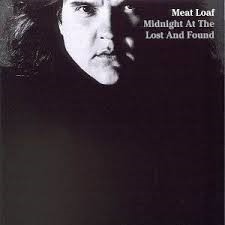
Released in 1983, Midnight at the Lost and Found marked a major shift in Meat Loaf’s career. This time, Jim Steinman did not write the songs, which immediately changed the album’s dynamic. Instead, Meat Loaf co-wrote several tracks himself, and the absence of Steinman’s theatrical writing style was noticeable. The album still included energetic rock performances, but the tone felt less dramatic overall.
Musically, it leaned into straightforward 1980s rock. While still showcasing strong vocals, the production lacked the layered complexity of previous Meat Loaf hits. Critics were generally underwhelmed, often pointing out the album’s inconsistent tone and forgettable hooks. Still, some fans appreciated the raw effort and the attempt to push forward during a challenging period.
Commercially, the album performed modestly. It did not produce major hit singles, and sales were weaker than earlier releases. However, the title track and select deep cuts retained a loyal following. Importantly, the album demonstrated Meat Loaf’s determination to keep creating despite setbacks.
The themes in Midnight at the Lost and Found touched on loss, frustration, and survival. Although the concept lacked the grandeur of previous records, the personal tone gave the material some emotional weight. Fans who explore Meat Loaf hits from this era often view the album as transitional.
Though not widely celebrated, the album remains part of the broader Meat Loaf story. It reflects a moment of artistic struggle and independence. While far from his strongest work, Midnight at the Lost and Found still offered glimpses of the passion that defined his earlier albums.
For listeners exploring lesser-known Meat Loaf hits, this album gives insight into his resilience. It stands as a document of a performer committed to his path, even when the creative circumstances were far from ideal.
Bad Attitude (1984)
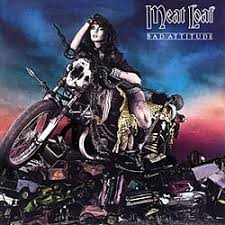
Released in 1984, Bad Attitude signaled a partial return to form for Meat Loaf. Although Jim Steinman only contributed two songs, the album leaned closer to the theatrical style heard on earlier Meat Loaf hits. Importantly, the production had a sharper 1980s sound, blending synth-driven rock with dramatic vocals.
Musically, the album introduced a harder edge. Guest appearances, including Roger Daltrey on a duet, helped elevate the energy. Critics offered mixed reviews, often praising the performances but criticizing the album's inconsistent structure. Still, some tracks stood out, especially in the UK, where the album found stronger commercial footing.
While it didn’t dominate the US charts, Bad Attitude reached the UK Top 10. Singles gained radio play in Europe, and fans appreciated the record’s blend of bombast and melody. The themes centered around frustration, defiance, and emotional conflict, aligning with Meat Loaf’s dramatic delivery.
Compared to Midnight at the Lost and Found, this album marked growth. It showed Meat Loaf refining his sound, regaining confidence, and reconnecting with his theatrical roots. The addition of Steinman’s songs helped reinforce the signature tone that defined earlier Meat Loaf hits.
Over time, Bad Attitude gained recognition as a solid, if uneven, chapter in his discography. The strong vocal performances and notable guest collaborations offered lasting appeal for long-time fans. Though not a breakout success, the album demonstrated that Meat Loaf could still deliver powerfully when supported by quality material.
For those exploring deeper into Meat Loaf hits, Bad Attitude is a worthwhile listen. It combines rock ambition with emotional grit, offering glimpses of what made him a standout voice in rock music during the 1970s and 1980s.
Blind Before I Stop (1986)
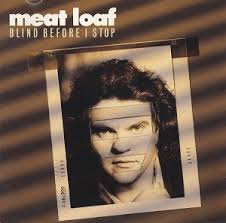
Released in 1986, Blind Before I Stop marked a noticeable change in direction for Meat Loaf. This album moved further away from the theatrical elements that defined earlier Meat Loaf hits. Instead, it embraced a polished, synth-heavy sound typical of mid-1980s pop-rock. Produced by Frank Farian, known for working with Boney M., the album leaned into commercial trends of the time.
Unlike previous records, this one featured fewer emotional ballads and more upbeat, electronic-driven tracks. Although Meat Loaf co-wrote several songs, Jim Steinman was not involved. That shift in songwriting impacted the album’s tone, leading to mixed critical responses. Many critics felt the production overshadowed Meat Loaf’s signature vocal power.
Commercially, the album had modest success. It performed better in Europe than in the US, with singles gaining limited chart traction. Despite that, some fans appreciated Meat Loaf’s willingness to experiment and modernize his sound, even if it strayed from his classic formula.
Themes in Blind Before I Stop centered on emotional confusion, relationship strain, and personal resilience. Although these topics were familiar territory, the delivery lacked the dramatic storytelling seen in earlier Meat Loaf hits. Still, the album revealed an artist trying to adapt during a period of significant change in the music industry.
Over time, this album has been viewed as a curious outlier in the Meat Loaf catalog. While it didn’t produce enduring hit singles, it captured a moment of artistic transition. Fans looking to explore the full range of Meat Loaf hits may find value in revisiting this album’s bold choices and unusual collaborations.
Ultimately, Blind Before I Stop stands as an experiment that reflects Meat Loaf’s desire to evolve, even at the risk of alienating longtime listeners.
Couldn't Have Said It Better (2003)
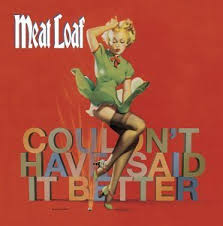
Released in 2003, Couldn't Have Said It Better marked another chapter in Meat Loaf’s evolving sound. The album mixed rock with a modern production style while retaining some of the dramatic elements fans expected from Meat Loaf hits. Unlike previous albums, Jim Steinman did not contribute to the songwriting, leading to a fresher, more varied approach.
Musically, the album featured a blend of hard rock, ballads, and theatrical touches. While some songs delivered classic Meat Loaf intensity, others leaned toward radio-friendly rock. Critics gave mixed reviews, noting the strong vocals but some inconsistency in songwriting quality. Nevertheless, the album found moderate commercial success, especially in Europe.
Key collaborators included producer Russ Titelman and songwriters like Diane Warren, who helped craft memorable melodies. The themes explored love, loss, and personal strength, continuing Meat Loaf’s tradition of emotional storytelling. Compared to earlier Meat Loaf hits, this album felt more grounded and less bombastic.
Although it did not reach the commercial heights of the Bat Out of Hell series, Couldn't Have Said It Better contributed solid entries to Meat Loaf’s catalogue. Fans appreciated the blend of classic rock energy with updated sounds. The album showed Meat Loaf’s willingness to adapt while maintaining his signature vocal power.
For listeners exploring the range of Meat Loaf hits, this record offers a mix of heartfelt performances and accessible rock tunes, representing his work in the early 2000s.
Bat Out of Hell III: The Monster Is Loose (2006)

Bat Out of Hell III: The Monster Is Loose was released in 2006 as the third album in the iconic Bat Out of Hell series. Meat Loaf once again collaborated with Jim Steinman, who contributed several songs and helped shape the album’s grandiose style. However, Steinman’s role was less central than on previous albums, which influenced the overall tone.
The album blends rock opera with contemporary production, mixing classic Meat Loaf hits’ theatrical style and modern rock elements. Critics gave mixed reviews; some praised its ambition and vocal performances, while others felt it lacked the cohesion of the original Bat Out of Hell albums.
Commercially, the album performed moderately, reaching fans but not matching earlier sales milestones. Key tracks like “It’s All Coming Back to Me Now” gained attention for their epic arrangements and emotional delivery. The album explores themes such as love, betrayal, and resilience, continuing the dramatic storytelling tradition.
Musically, it incorporates strong guitar riffs, orchestration, and Meat Loaf’s powerful vocals. Collaborators include Jim Steinman and other writers, providing a varied songwriting palette. The album aimed to recapture the magic of the original Bat Out of Hell while updating it for a new era.
For anyone exploring Meat Loaf hits, this album adds depth to his discography. It serves as a bridge between the classic rock opera sound and a more modern rock approach.
Hang Cool Teddy Bear (2010)
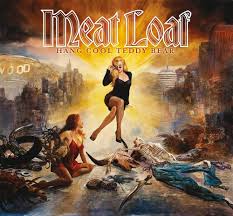
Released in 2010, Hang Cool Teddy Bear marked a fresh phase in Meat Loaf’s career. This album shifted from the operatic style of previous works to a more contemporary rock sound, reflecting a new approach to Meat Loaf hits. It combined powerful vocals with modern production techniques and varied songwriting.
The album featured contributions from multiple songwriters, including Diane Warren and Desmond Child, offering diverse musical styles. Critics generally responded positively, praising Meat Loaf’s vocal strength and the album’s energy. Commercially, it achieved moderate success, appealing to longtime fans and new listeners.
Musically, Hang Cool Teddy Bear blends rock, pop, and ballads with dramatic moments. The lyrics explore themes of mortality, resilience, and hope, adding emotional depth. The production focused on clean arrangements and modern instrumentation, contrasting with earlier albums’ grandiosity.
Collaborators included prominent rock musicians and producers, enriching the album’s sound. While it lacked Jim Steinman’s involvement, the album still maintained the emotional intensity characteristic of Meat Loaf hits.
Overall, Hang Cool Teddy Bear represents a successful reinvention. It offers fresh material while honoring Meat Loaf’s legacy, making it a key album for those exploring his discography in the 21st century.
Braver Than We Are (2016)
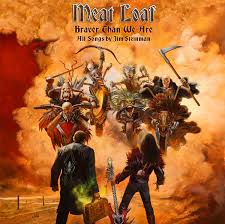
Released in 2016, Braver Than We Are was Meat Loaf’s final studio album, closing his prolific career with a collection of powerful rock songs. This album marked a return to collaboration with Jim Steinman, who wrote all the tracks, giving it a strong connection to classic Meat Loaf hits.
The album embraced a theatrical rock style, blending Steinman’s signature grandiosity with modern production. Critics appreciated the album’s energy and Meat Loaf’s enduring vocal power, often highlighting its emotional depth. Though commercial success was modest, fans welcomed the nostalgic yet fresh sound.
Musically, the album features dramatic arrangements, rich orchestration, and storytelling rooted in themes like courage, love, and perseverance. Steinman’s influence shines through the epic compositions, recalling the style of earlier albums in Meat Loaf’s discography.
Collaborations with veteran musicians and producers helped deliver a polished, dynamic sound. Braver Than We Are serves as a fitting final chapter, reinforcing Meat Loaf’s legacy in rock music.
For those exploring Meat Loaf hits, this album offers a strong blend of classic theatrical rock and contemporary energy, rounding out his impressive body of work.
Meat Loaf’s albums showcase a unique blend of theatrical rock and emotional storytelling. From the groundbreaking Bat Out of Hell series to his later works, his music evolved while maintaining powerful vocals and memorable songs. Exploring Meat Loaf hits reveals a lasting impact on rock music and a legacy that continues to resonate with fans worldwide.
0 thoughts on “Exploring Meat Loaf Hits; An Album Review”
Add a Comment Cancel reply
Recent Posts
Queen studio albums: A Review
Phil Collins Albums Ranked & Reviewed – Complete Guide to Every Studio Album
The best of Massive Attack
Let’s Make Magic
Book Your Event DJ Now





I have read some excellent stuff here. Definitely value bookmarking for revisiting. I wonder how much effort you put to make the sort of excellent informative website.